The last Land Rover: Farewell to an icon
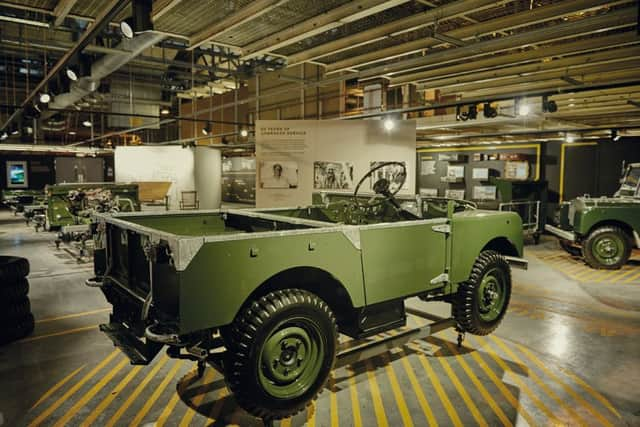

With the possible exception of the Volkswagen Beetle and the Mini, no other vehicle in history has captured the public’s imagination in the same way.
It has transported troops into battle, explorers to the far corners of the world and been the mainstay of the emergency services. Heads of state have been carried in Defenders - our own queen has often been seen behind the wheel and Winston Churchill was a fan- and it has even had starring roles in a number of Hollywood blockbusters.
Advertisement
Hide AdAdvertisement
Hide AdTo the casual observer there seems little to differentiate the very early leaf-sprung model, launched in 1948 at the Amsterdam Motor Show as a basic utility vehicle in the austere years following the Second World War, from the very last one that will roll off the production line today.
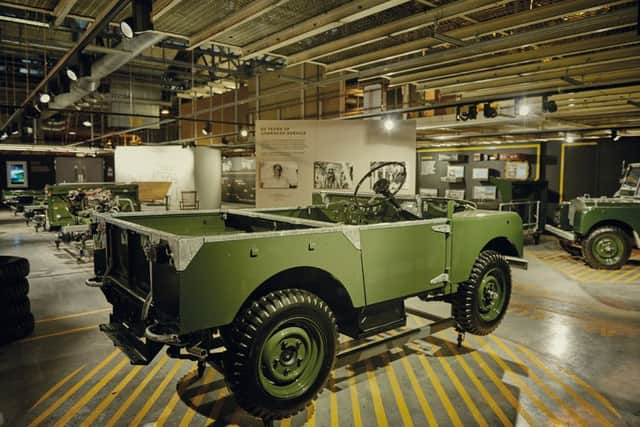

But in these intervening years there has, of course, been many changes. The most significant of which is that leaf springs were replaced by coils in 1983 - a decision that, to this day, divides Land Rover enthusiasts behind strict demarcation lines - and that selectable four-wheel-drive was replaced by permanent four-wheel-drive in 1984.
Editor of Classic Land Rover magazine and a life-long fan, John Carroll said: “ For longer than most of us have been alive, the Land Rover has been a constant.
“Strangers have told me about driving Land Rovers on the farm they grew up on, a National Serviceman recalled driving one in Aden, Americans have said how they wanted one after seeing them in the pages of the National Geographic, a former squaddie told me about being in the back of one in Belfast, a bloke in a Barnsley pub remembered driving one while working on the construction of the M62… I’ve heard these and a 1001 other stories in which the Land Rover is the common ground and illustrates it as one of the few constants in post-war motoring.”
Advertisement
Hide AdAdvertisement
Hide AdToday’s Land Rover Defender - which incidentally wasn’t actually called that until 1990 - is still as rugged and capable as it ever was but now comes with luxuries such as heated leather seats, air conditioning and as well as a workhorse is now seen as a ‘Lifestyle’ vehicle - with prices to match.
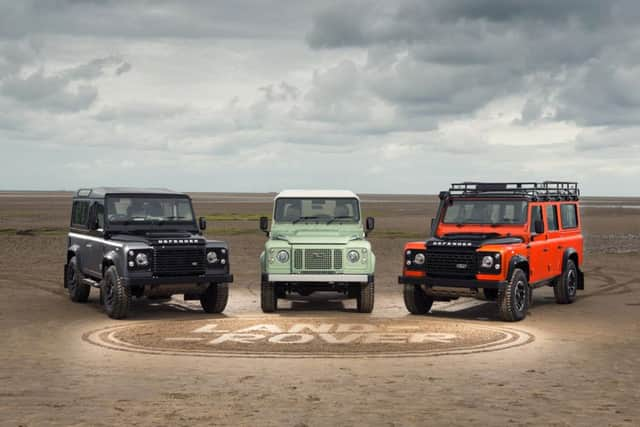

Even the most basic has a starting price of more than £25,000 - not that you can buy a new one now - and the two-millionth special edition recently sold for £400,000 with all proceeds going to charity.
Land Rover said they had to pull the plug on Defender in part because it fell foul of legislation by the European Council and Parliament to bring in stricter measures for new car emissions which the vehicle just couldn’t meet.
And UK- built Defenders younger than 25 years old have been outlawed in America for a number of years as they don’t meet crash safety and emissions - the lack of airbags contributing to this.
Advertisement
Hide AdAdvertisement
Hide AdExporters trying to circumvent the legislation have been caught falsifying the vehicles’ log books to make them appear older than they are and have had their vehicles crushed by US customs officials.
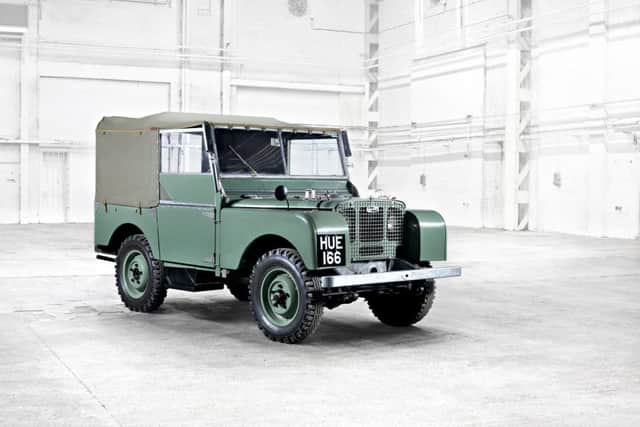

Parts will continue to be manufactured for Defenders for 15 years - five years longer than legislation dictates - and a model to replace the Defender is planned; as yet details are being kept very firmly under wraps.
Sources at Land Rover have suggested that, although the new model would be instantly recognisable by those who drive the current vehicle it won’t necessarily be cheap.
Yorkshire Post motoring writer Frederic Manby grew up with Land Rovers and has driven every model but never owned one: “I’m the generation as old as the Land Rover. When the first one appeared in our Dales farming village it already looked battered. It was the 1950s and I remember the spoon-shaped interior door releases - some sort of industrial irony that in time they would be replaced by the plastic release latches from a Morris Ital. There were the red and white knobs on the gearbox selection levers - colours from my childhood abacus. In my young vocabulary I thought it was called a Land Drover - a logical name for something used to herd sheep. Horses had gone by this time but the trappings still hung in barns, like useless old tools you leave in your shed.”
Advertisement
Hide AdAdvertisement
Hide AdJust as Land Rover announced they were ceasing production of the Defender I belatedly caught the Land Rover bug and am now the very proud owner of a 1956 Series One, a 1975 Series III and a 1993 Defender. They are expensive to maintain and run, noisy, draughty and, in the case of the Series III, my feet get wet when it rains.
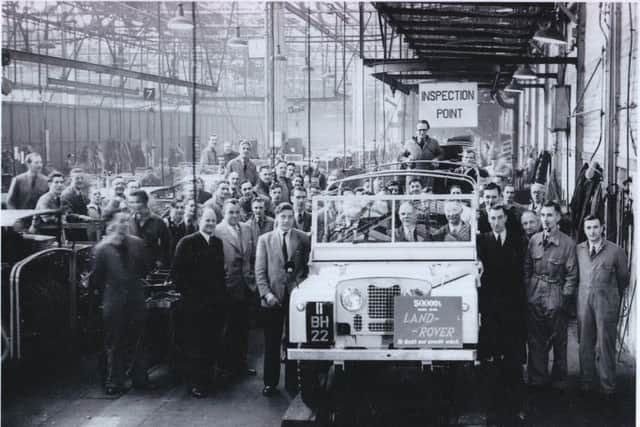

But I wouldn’t have it any other way. When I drive them I love the fact that I’m driving a vehicle that has so much history attached to it and has played such an important role in the affairs of the world.
My visit to the Solihull factory and the Defender production line last week was really quite emotional, more so than I expected. I felt privileged to be there and to witness the end of an era.
A year of celebration
During the past 12 months more than 10,000 people have visited Land Rover’s Solihull factory to see an authentic replica of the production line used to manufacture the first ever Land Rover in 1948.
Advertisement
Hide AdAdvertisement
Hide AdThey have then been able to witness a 500-strong team of men and women (plus 20 robots) build the Defender largely by hand using techniques that, in some cases have not changed since the very first Land Rover Series One was produced.
In fact there is a part that was manufactured for HUE 166, the first prototype, that can still be found in those leaving the factory every four minutes today (in comparison, a Range Rover, which is built largely by robot leaves the factory every 86 seconds yet still employs a workforce of 2,800).


Birth of a legend
The Rover Company can be traced back to 1861, and progressed from producing sewing machines and innovative bicycles to the launch of its first motorcar in 1904. After the Second World war, in 1947, Maurice Wilks, Rover’s chief engineer, came up with the idea of the Land Rover while using a Jeep for land clearance at his home in the Midlands and for recreation at his holiday home in Anglesey. Together with his brother Spencer, who was managing director of the company at the time, he saw the potential of a new, multi-purpose agricultural vehicle, which could be used on the land as well as on roads. The original Land Rover was first presented by Rover at the Amsterdam Motor Show in 1948, and would become Rover’s most successful vehicle for the next decades.
LIFESTYLE
After its launch in 1948, adventurers all over the world quickly discovered the capabilities of the Land Rover. One of the first, and most famous, Land Rover expeditions was the Oxford and Cambridge Far East Overland Expedition. The Land Rover was not only used for expeditions, it was also used by celebrities, royalty, for humanitarian work and competitive rallies, and very quickly became classless.
First birthday
Advertisement
Hide AdAdvertisement
Hide AdLand Rover celebrated its first birthday in April 1949 with a special event at the factory. More than 200 Rover staff voluntarily gave up a Saturday afternoon to demonstrate the extraordinary abilities of the company’s newest product. Nearly 4,000 people came to take off-road rides and to see the static exhibitions around the factory site.
Oxford and Cambridge expeditions 1952-1955
The Oxford and Cambridge Expeditions were three expeditions overseas carried out by adventurous university students. The second expedition was the most famous of the three, and took six Oxford and Cambridge students from London to Singapore, the first time the journey had been achieved overland. After the return, one of the students wrote the bestseller book ‘First Overland’ from the expedition, which in many ways helped create the unique idea of the Land Rover as a vehicle associated with ‘real adventure’.
Red Cross
Land Rover has supplied its vehicles as ambulances to the Red Cross since 1954. Today, the company is a lead sponsor of the International Federation of Red Cross and Red Crescent Societies.
Camel Trophy & G4 Challenge
The Camel Trophy in the 1980s and 1990s, and the G4 Challenge in the 2000s, were adventure challenge events that spread knowledge of the Land Rover by catching the imagination of would-be adventurers around the world. Defenders and their predecessors figured prominently as the crew vehicles as these events played out in exotic locations around the world, testing international participants in a spirit of friendly competition.
Royal Geographic Society
Advertisement
Hide AdAdvertisement
Hide AdThe Land Rover rapidly proved invaluable to explorers and those involved in scientific work for the Royal Geographical Society. Today, Land Rover is a major sponsor and supporter of the RGS and its work.
Military
The first enquiry about Land Rovers for the military was received before production had begun, and the first examples were delivered to the British War Department in December 1948. Since then, the Land Rover has been ordered by military and paramilitary forces world-wide, and has been adapted in countless ways to fulfil specific roles.
Born Free
Born Free was originally a book about how an orphaned lion cub was raised by George and Joy Adamson, and was eventually returned successfully to the wild. It became a hugely successful film in 1966, and the film’s stars – Virginia McKenna and her husband Bill Travers – set up the Born Free Foundation to support wildlife conservation. Land Rover is now a major sponsor of the Foundation.